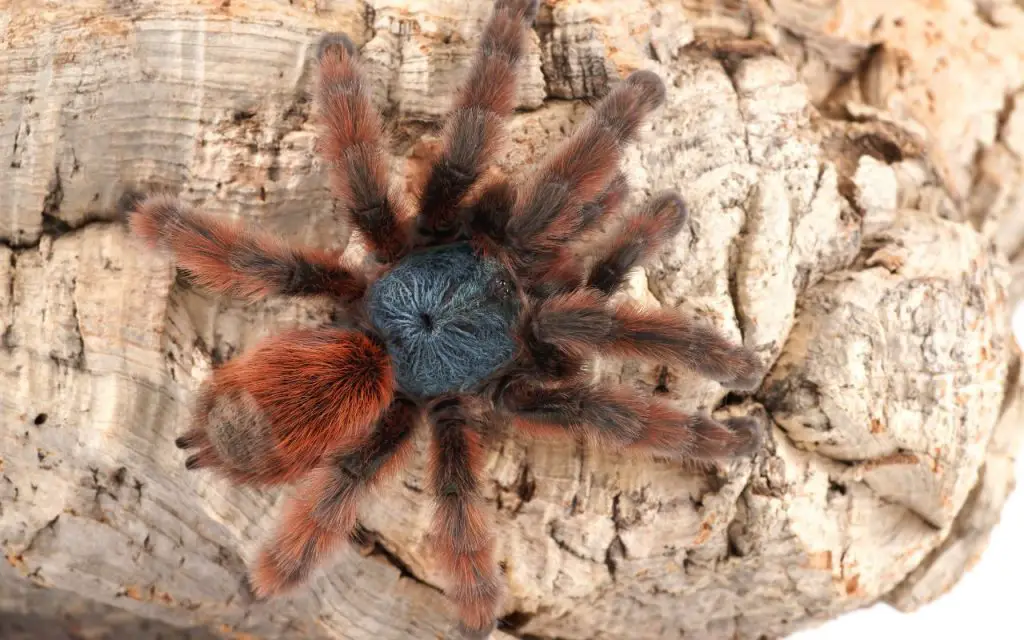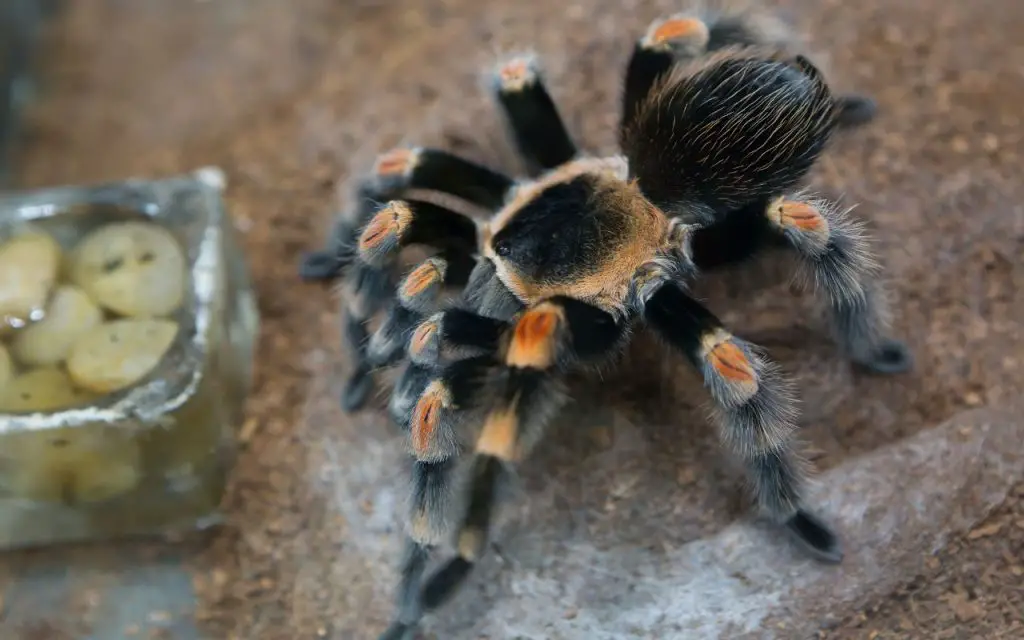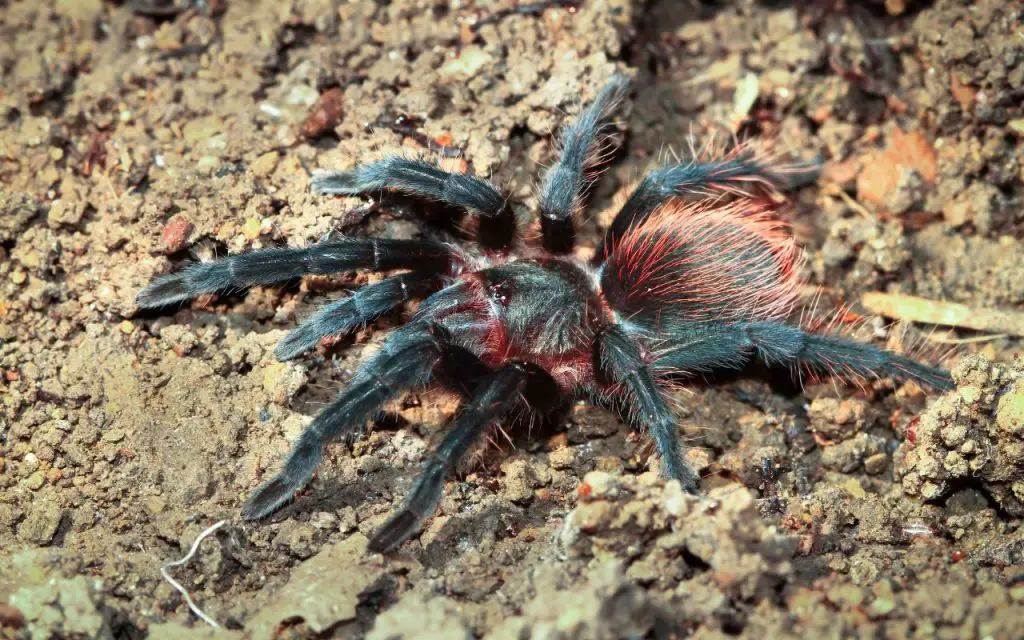Last updated on February 1st, 2023 at 10:06 am
Do tarantulas need heat mats? Most of the time they do not need them, unless you live in a very cold climate and your house gets below 65F in winter…
Heat mats are a type of equipment that can be a great way to regulate the temperature in the enclosure and prevent it from getting too cold. However, heat mats should be used with caution, because they can overheat the enclosure and harm the tarantula. This article will cover the benefits of heat mats and how to place them in the tarantula’s tank.
Before we get started, let’s keep a few things in mind:
- Heat mats are only ever needed in a very cold house (say, if you live very far north)
- Heat mats should only be used if electricity prices are high where you live, and using a space heater in the room is out of the question
- Only small, 5 watt mats should ever be used
- Heat mats should be used with a thermostat
- Heat mats should never be placed under substrate (more on this later on in the article.
Tarantula temperature
Heating your tarantula‘s enclosure is not difficult. Heat mats come in different sizes, and you only need a little 5 watt one to heat a tarantula enclosure. They should be placed in the proper temperature range and connected to a thermostat, whose probe should be stuck to them for regulation.
They also contain a special heating film that keeps the insulation inside the mat intact. Most of these mats are also equipped with adhesive paper to make sure they stay attached.
If you’re able to, it’s easier to invest in a modern space heater to keep the room you keep your spiders in at 65F or above. Old, metal space heaters are a hazard if left unattended. Remember to monitor your tarantula’s water levels often, as heating can cause the air to dry out and make the tarantula’s environment even dryer.
The obvious drawback with this option is that it costs much, much more in electricity, especially when you consider the average space heater runs on 1500 watts, whereas a heat mat can run on 5!

How to heat a tarantula tank
If you live in a very cool climate, like northern Canada, parts of the UK or Scandinavia, you may wonder how to heat a tarantula habitat.
Most species prefer temperatures in the mid to high-seventies, but will be fine as low as 65F. However, there are times when you might need to use artificial heat to keep the tarantulas happy.
The best way to heat a tarantula enclosure is to use a space heater in the room. You can use oil-filled electric space heaters or oscillating heating fans. Make sure the heater you buy has a timer or a thermostat to control the temperature, and that it is placed away from the enclosure
Don’t use heat mats unless you have to – in which case they must be regulated with a thermostat.
Obviously, this advice given by most resources is to not use heat mats, because they can dry out the enclosure etc. If you live in a very cold climate, using a space can simply be too expensive and this website understands this factor.

Best heat source for tarantula
What is the best heat source for tarantulas? Overall, it has to be a space heater in the room. But, as we’ve just mentioned – this can be a very expensive option.
Room heaters are an effective way to raise the temperature of a tarantula’s enclosure. Make sure your heater has an automatic off-switch, as room heaters can get extremely hot. A thermometer is an essential part of any heat source for a tarantula, as room temperature and tarantula temperature are often different.
The next best option, and really the only other safe option, is a regular, 5 watt heat mat. These produce a gentle heat that creat a little warm patch for your spider to go to if it gets too cold.
Other options often sold in pet stores simply get too hot, and quickly kill your spider.
Dangerous heat sources include:
- high powered heat mats
- ceramic heat emitters
- heat rocks
- heat lamps

Tarantula heat mat placement
If you are considering using heat mat, there are a few things you should know about its placement. While tarantulas are not particularly comfortable with direct heat sources, they tend to just sit on them and not realise when they are overheating. This leads to them drying out and dying.
When determining where to place a tarantula heat mat, it is best to place it on one side of the tarantula’s cage. This will prevent the heat source from heating the substrate, which is important because many tarantula species will dig down to cool off when they want to. For best results, attach the heating mat to the wall of the cage and use it with a thermostat.
The most important thing to remember is to not place a heat mat on the bottom of the enclosure, or under the substrate. This leads to hotspots and can overheat the mat.

Can a tarantula get too hot?
The answer to the question “Can a tarantula get too warm?” is an emphatic yes. The quickest way to kill a tarantula is by overheating it, mainly because of the dehydration that ensues. Nonetheless, they do need to be warm – just not hot.
Tarantulas are true ectotherms and cannot produce their own body heat, so they need warmth from their surroundings. Most of these creatures are found in warmer areas of the world, and they need warmth for various biological processes. Keeping your tarantula in a cold room will likely cause it to die.
If you’re keeping your tarantula in a cool room, heat it properly with a heating pad or a space heater. Heat mats are most effective if they’re used in an aquarium that’s at least five gallons in size. Before purchasing a heating pad, determine how much room your tarantula requires, and then match it to that size. If your tank is five to ten gallons in size, a 5 watt heat pad will be adequate.







